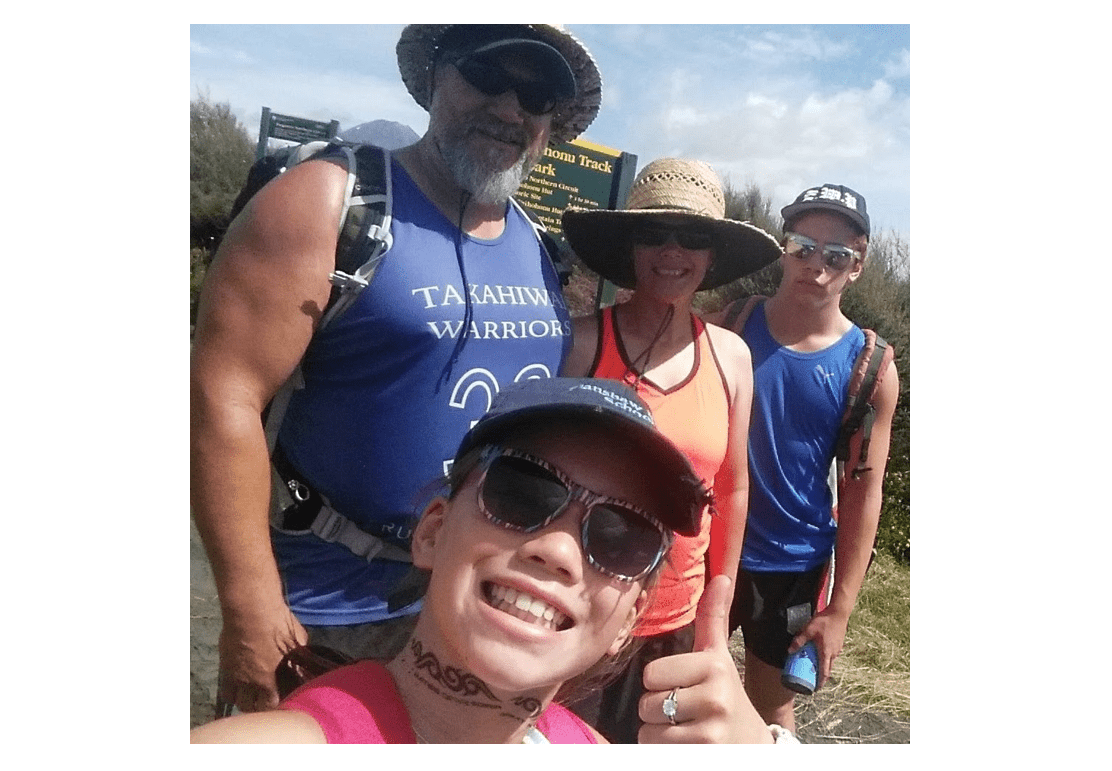Dave Milner
Ngāti Wai, Ngāti Whatua, Ngāpuhi, Ngāti Porou
Co-leader of Ngā Rākau Taketake scoping group
Ko Ngatokimatawhaorua tōku waka
Ko Manaia tōku maunga
Ko Whangārei te Rerenga Paraoa tōku Moana
Ko Takahiwai te whenua
No Dave Milner ahau
Kei Whakaoriori tōku kainga ināeanei
Ko George Milner tōku matua
Ko Crete Milner (nee Pirihi) tōku whaea
Ko Ngāti Wai, Ngāti Whatua, Ngāpuhi, Ngāti Porou tōku iwi
Ko Patuharakeke, Ngāti Manu, Ngāti Rangi ki Reporua tōku hapū
My pepeha identifies my whakapapa and my connection to our whānau/hapū and taiao ki uta ki tai – from our maunga to our moana.
Our grandparents whare is next door to our Takahiwai marae, so we learnt the tikanga and kawa of our marae through the various support roles, from peeling veges, gathering kai moana, preparing hangi, and from cooking for small meetings, to huge tangi.
Just the standard upbringing of our time really.
What are your earliest memories of nature/the environment?
As kids we would escape into the ngahere as often as possible and search in the streams for kai, go up to the pa, get lost, and follow the streams to find our way home again.
If we weren’t in the ngahere we were in the awa, estuaries, or moana swimming, diving, and gathering kai moana for whānau and the marae. This was dependant on the tides, condition of the kai, based on the moon that I now know as, our maramataka.
How would you describe your job?
My current job allows me to ‘work to live’. When an employer asks to write up your dream job description, and follows through saying they can help with that . . . that’s one of the craziest things I’ve ever heard!
So I have been working with the crazy amazing Perception Planning Limited whānau for just over a year now. It enables me to balance whānau priorities with work priorities, and also support mahi for our whānau hapū at home whilst living in Whakoriori (Masterton) in the Wairarapa.
The greatest part of my mahi is supporting hapū and iwi to build capacity in engaging in environmental resource management through building relationships.
What inspired you to follow your chosen career?
A career change from the Automotive Electrical Supplies market, to learning about hapū resource management at home was driven by my mother and aunties.
They would drag me along to their trust board meetings focused on the wave of development in our rohe of Ruakaka, Bream Bay where the Northport Deepwater Port, and Refining NZ Oil Refinery operate.
The ‘light bulb’ moment was in 2006 when a mass Tohora Pilot Whale stranding occurred in our rohe.
Ngāti Wai came in and supported the Kaupapa and called hapū and iwi in from around the motu for a national wananga to revive a customary practice of flensing the stranded whales that passed away. This took us through the process of mourning the passing of such rangatira, then understanding the significance of their sacrifice, and finally turning them into taonga as resources such as; blubber oil, spermaceti oil, teeth, bone and other resources.
How does your Māori whakapapa/culture influence how you approach your mahi?
I have spent the last 15 years reconnecting with te Ao Tūroa in various rohe across Te Ika a Maui. My upbringing was based on our whānau and hapū values. We recognise our whakapapa to our whānau and our extended whakapapa to our tuakana the children of ngā atua e.g. ngā rakau tamariki o Tane, ngā Tohora tamariki o Tangaroa.
An aspiration for me is to restore the health of our taiao to a level that can manage sustainable harvesting of taonga ki uta ki tai.
What are your hopes for Māori in this space in the future?
There is great value in research and science however, the challenge is underpinning this with the holistic te Ao Māori approach.
Some science researchers are starting to recognise tupuna kōrero from generations ago. Whānau hapū stand strong and maintain the need to protect our historical kōrero and knowledge.
They do this through our kāhui kaumatua leadership in a way that keeps the focus of that knowledge on reversing the decline of biodiversity risks (such as kauri dieback and myrtle rust) that are killing our rangatira rākau, and ensure it is not used for any commercial gain.
My ultimate goal for this mahi is to give full recognition to a Waka Hourua model reflecting a shared partnership role with an even split of responsibilities, resources, and governance. Each partner focuses on their approach, and brings shared values, initiatives, and outcomes together focused on improving the health of our biodiversity and Te Ao Tūroa.
How do you think BioHeritage can/will help with this?
BioHeritage is like a ‘refresh’ from the existing management organisations, in particular kauri dieback, and myrtle rust. There is a great membership that is focused, knowledgeable, innovative and passionate. Some are crazy and ambitious!
It’s almost like a breath of fresh air on challenging issues where there has not been a lot of progress. Information or ‘data’ is critical for change in this kaupapa.
I see the BioHeritage Challenge as another step towards enabling true co-governance, co-design, co-management, co-operation under Te Tiriti o Waitangi, and including rangatahi representation in the challenge, focused on healing our taonga.
Is there anything else?
A reminder that while we are going through a reconfiguration our taonga are still no better off. URGENCY is the key factor here.
Enabling whanau, hapū, iwi, and communities, to participate in healing our taonga must be supported and resourced in a structured manner to share the load.
It would be great for the Challenge to support rangatahi involvement.
